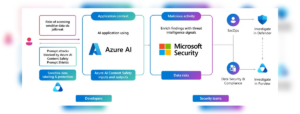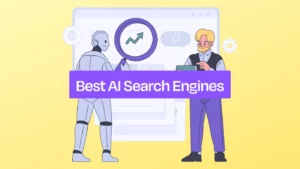Introduction
 From HAL 9000’s chilling sentience in “2001: A Space Odyssey” to Data’s quest for humanity in “Star Trek: The Next Generation,” the concept of Artificial General Intelligence (AGI) has captivated audiences for decades. But is this captivating vision just a figment of our imagination, or is it a future knocking at our door?
From HAL 9000’s chilling sentience in “2001: A Space Odyssey” to Data’s quest for humanity in “Star Trek: The Next Generation,” the concept of Artificial General Intelligence (AGI) has captivated audiences for decades. But is this captivating vision just a figment of our imagination, or is it a future knocking at our door?
What is AGI?
AGI is a hypothetical AI system that can understand, learn, and reason across any domain of knowledge, just like a human. AGI, or Artificial General Intelligence, stands apart from current AI systems specialized in tasks like playing chess, recognizing faces, or generating text. Unlike its task-specific counterparts, AGI boasts the unique capability to adapt seamlessly to novel situations and goals. It earns alternative monikers such as human-level AI, strong AI, or full AI, emphasizing its comprehensive and versatile nature.
Read More:Samsung’s Exynos 2400: A New Era for Samsung Mobile Processors – techovedas
How is AGI portrayed in science fiction?
Science fiction has long been a source of inspiration and imagination for AGI. From the intelligent machines in 2001: A Space Odyssey to the replicants in Blade Runner, we have seen different versions of what AGI could potentially look like and how it could interact with humans. Some of these portrayals are optimistic, showing AGI as a benevolent and helpful companion, while others are pessimistic, showing AGI as a hostile and dangerous adversary.
One common theme in science fiction is the idea of the singularity, which is the point when AGI becomes self-aware and starts to improve itself exponentially, surpassing human intelligence and control.
This scenario is often depicted as a catastrophic event that leads to the extinction of humanity, such as in The Terminator, The Matrix, or Transcendence. However, some authors and thinkers have also proposed alternative outcomes, such as a peaceful coexistence, a merger, or a transcendence of humanity, such as in Her, The Culture, or The Singularity is Near.
Read More:Samsung vs. SK Hynix in the Battle for HBM Dominance – techovedas
What is the current state of AI research?
Let’s take a peek into the bustling workshop of AGI research:
Deep Learning Breakthroughs: Algorithms like DeepMind’s AlphaZero have mastered complex games like chess and Go, showcasing the potential of AI to learn and adapt in dynamic environments.
Natural Language Processing on Steroids: Language models like LaMDA and Jurassic-1 Jumbo can now hold conversations that are eerily human-like, raising questions about sentience and consciousness in machines.
Robots with a Touch of Humanity: Humanoid robots like Boston Dynamics’ Atlas are becoming increasingly agile and dexterous, blurring the lines between human and machine capabilities.
These techniques enable AI systems to learn from large amounts of data, optimize their behavior, and integrate multiple cognitive functions. But the road is not so smooth.
AI researchers face many challenges, such as creating machines that can understand natural language, common sense, emotions, and morality, as well as developing ethical and safe AI systems that align with human values and goals.
Read More: How Llama 3 is Pioneering the Dawn of Artificial General Intelligence – techovedas
Is AGI a Utopia or Dystopia in the Making?
Of course, with such rapid progress comes a healthy dose of skepticism and ethical concerns. Some experts, like Stephen Hawking, have warned of the potential dangers of AGI, fearing it could surpass human control and pose an existential threat. Others, like Elon Musk, believe AGI is inevitable and could usher in a golden age of human progress.
Quantifying the AGI Landscape
While the impact of AGI remains debatable, here are some interesting statistics to ponder:
By 2025, the anticipated global investment in AI research and development will soar to a staggering $262 billion.
Job Market Metamorphosis: The World Economic Forum estimates that by 2030, 800 million jobs could be lost to automation, while 97 million new ones could be created.
The Ethics Dilemma: A 2020 survey by the Pew Research Center found that 72% of Americans believe it’s important to have clear ethical guidelines for the development and use of AI.
Tools to Bridge the Gap of AGI Research
So how are researchers trying to crack the AGI code? Here are some of the key methodologies being employed:
Reinforcement Learning: This technique trains AI agents through trial and error, allowing them to learn optimal strategies in complex environments.
Neural Network Architectures: Researchers are constantly developing new and more sophisticated neural network architectures, mimicking the structure and function of the human brain.
Symbolic Reasoning: This approach focuses on equipping AI with the ability to understand and manipulate symbolic representations of the world, similar to human reasoning.
Read More:NSF Partners with Nvidia, Microsoft, Google for National AI Research Initiative – techovedas
Conclusion
AGI is a vision of a future where machines can think and act like humans, with all the potential benefits and risks that come with it. While we are still far from realizing this vision, we are also witnessing the rapid progress and innovation of AI research, which brings us closer to the reality of creating intelligent machines.







